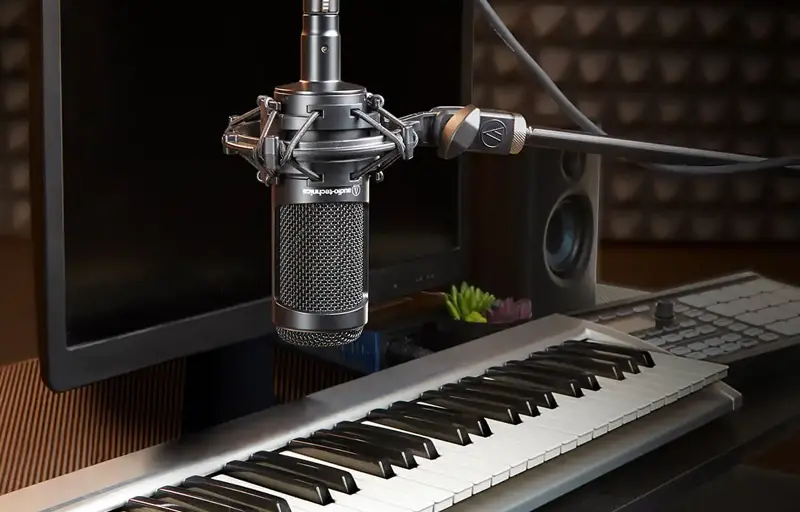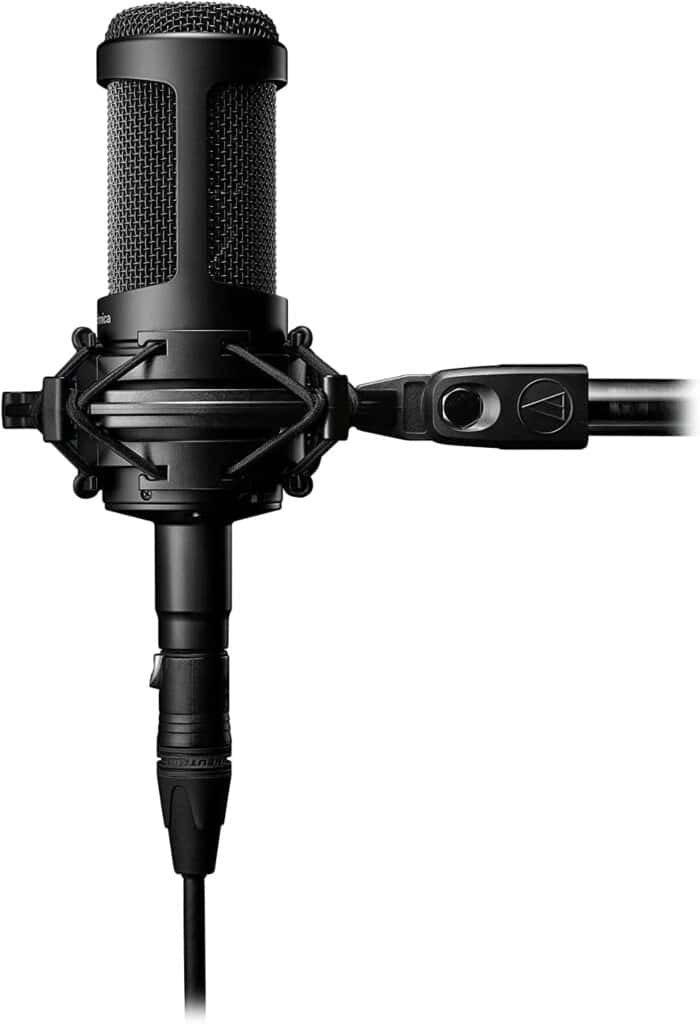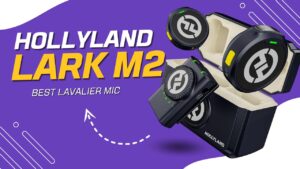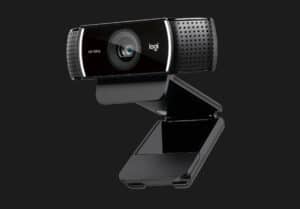In the realm of budget-friendly yet high-performance studio microphones, the Audio-Technica AT2035 has carved a niche for itself. Renowned for its versatile capabilities and clear sound reproduction, the AT2035 caters to musicians, podcasters, and content creators alike.
It’s one of the few microphones we recommend to early podcasters (though new podcasters may prefer a USB option – more on this in a moment.)
In this review, I delve into the features and performance of the AT2035, exploring its strengths and considering how it stands out in a competitive market.
Castos is a participant in the Amazon Services LLC Associates Program. We may earn commissions from your purchases on Amazon.com, though at no cost to you.
What is the Audio-Technica AT2035?
The Audio-Technica AT2035 is a cardioid condenser microphone designed for professional audio recording applications. It is known for its versatility and is commonly used in studio settings for recording vocals, acoustic instruments, and other sound sources.
If you buy time in a studio or production facility, there’s a good chance you’ll find one of these lying around.
The cardioid polar pattern of the microphone means that it captures sound primarily from the front while minimizing pickup from the sides and rear, reducing background noise and providing focused audio capture.
The AT2035 has a wide frequency response (20Hz to 20kHz), making it suitable for capturing a broad range of frequencies. It also has a switchable 80Hz high-pass filter, which helps reduce low-frequency noise such as handling vibrations and room rumble. Additionally, the microphone has a -10 dB pad that allows it to handle high sound pressure levels without distortion.
The AT2035 comes with a custom shock mount (AT8458) designed to isolate the microphone from vibrations and mechanical noise, ensuring clean and clear recordings. In my experience, this is far more important than you would expect.
The microphone uses a standard 3-pin XLR output connector, making it compatible with a variety of audio interfaces, preamps, and recording devices.
Specifications and Features
If you’re an audiophile like me, you’ll need the full specs:
- Microphone Type: Cardioid Condenser
- Frequency Response: 20Hz – 20kHz
- Polar Pattern: Cardioid (picks up sound from the front and minimizes sound from the sides and rear)
- Sensitivity: -33 dB (22.4 mV) re 1V at 1 Pa
- Impedance: 120 ohms
- Maximum Input Sound Level: 148 dB SPL, 1 kHz at 1% T.H.D.; 158 dB SPL, with 10 dB pad (nominal)
- Signal-to-Noise Ratio: 82 dB, 1 kHz at 1 Pa
- Dynamic Range (Typical): 136 dB, 1 kHz at Max SPL
- Pad Switch: -10 dB
- Low-Cut Filter: 80 Hz, 12 dB/octave
- Connector: Integral 3-pin XLRM-type
- Weight: 403g (14.2 oz)
- Dimensions: 170.0 mm (6.69″) long, 52.0 mm (2.05″) maximum body diameter
- Output Connector: 3-pin XLRM-type
- Accessories Included: AT8458 shock mount, 5/8″-27 to 3/8″-16 threaded adapter, and a protective pouch
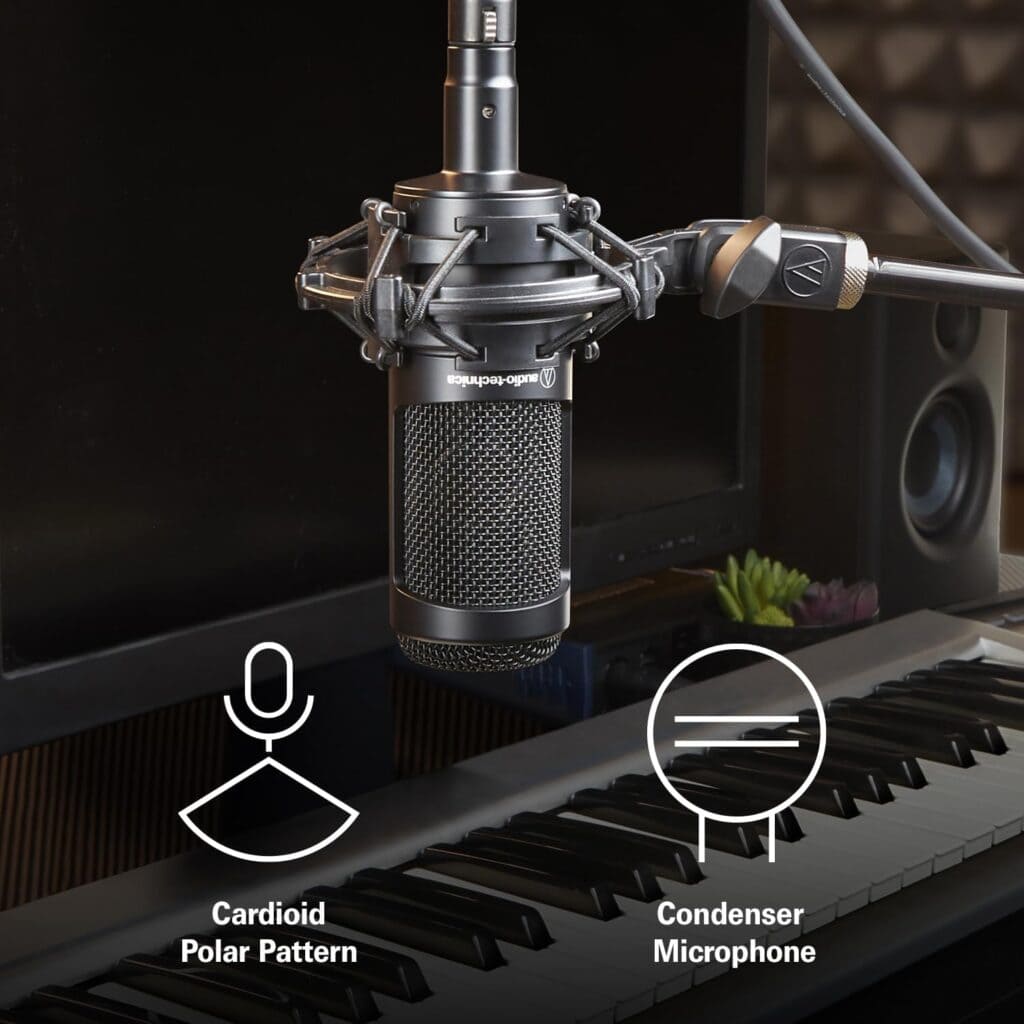
Audio-Technica AT2035 Performance
The performance of the Audio-Technica AT2035 is known for delivering high-quality audio capture in various recording situations. Frankly, this applies to the entire brand, in my opinion. Let’s walk through the key aspects of its performance:
Sound Quality
The AT2035 consistently delivers clear and transparent audio reproduction. Its wide frequency response, spanning from 20Hz to 20kHz, ensures that it faithfully captures the nuances of vocals, instruments, and other sound sources.
(In podcasting we don’t plug in a lot of instruments, but it’s nice to have the option if you want a custom sound effect.)
Cardioid Polar Pattern
The microphone’s cardioid polar pattern is a game-changer. It aptly captures sound from the front while intelligently minimizing unwanted background noise from the sides and rear, resulting in focused and professional recordings.
This is important for podcasting. You only need to capture the sound from your mouth, which only comes from one direction, so everything else should be minimized.
Low Self-Noise
The microphone offers low self-noise, especially when recording in quieter environments. This feature ensures that your recordings remain pristine, free from any distracting background noise introduced by the microphone itself.
SPL Handling
With the -10 dB pad, the AT2035 fearlessly tackles high sound pressure levels without sacrificing clarity. This versatility captures a wide range of sound sources, from delicate vocals to powerful instruments.
Frankly, I wish more microphones cared about this more. It’s important for podcasting since we deal with guests who have different voice registers.
High-Pass Filter
The built-in 80Hz high-pass filter will be a valuable tool in your recording toolkit. Engaging it helps eliminate low-frequency rumble and handling noise, ensuring your recordings sound professional even in less-than-ideal environments. This is helpful if you regularly podcast in different locations.
Built to Last
The microphone’s robust construction is durable. Whether in the controlled environment of a home studio or on the stage for live performances, the AT2035 consistently holds up, supported by the included shock mount that minimizes vibrations and handling noise.
Versatile Applications
From musical projects to podcasting, the AT2035’s versatility shines through. It seamlessly adapts to different recording needs, making it an ideal choice for musicians, podcasters, and content creators.
XLR Connectivity
The standard XLR connector ensures a hassle-free and dependable connection. Whether plugged into an audio interface or recording equipment, the AT2035 is fairly user-friendly.
That said, the 2035 doesn’t have a USB plug, which is a challenge for new podcasters who don’t have mixing equipment. For ths reason, I don’t recommend this mic as the first microphone, but it’s definitely a good option for your second or third unit.
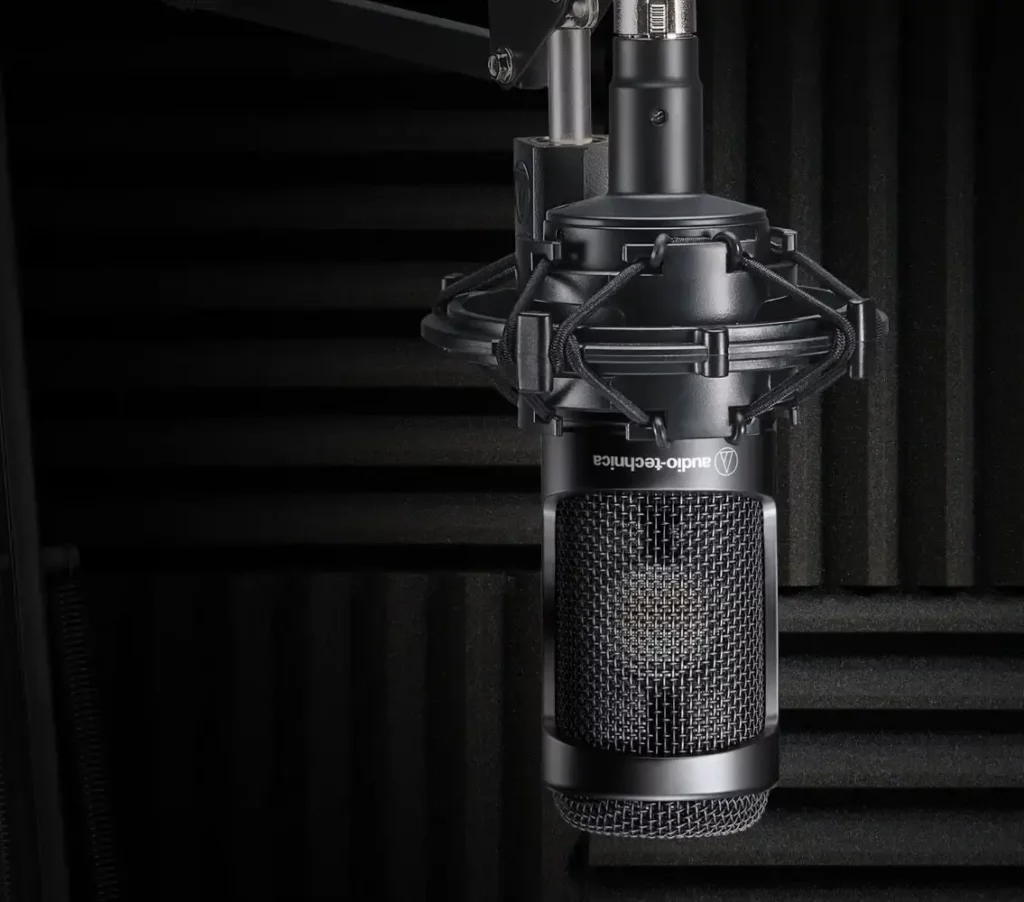
Audio-Technica AT2035 Drawbacks
While the Audio-Technica AT2035 is widely praised for its performance and versatility, it’s not the perfect mic, so it’s important to consider the drawbacks.
One notable drawback is the absence of an on/off switch. Unlike some microphones that feature a built-in switch for convenient activation and deactivation, the AT2035 lacks this feature. Consequently, users need to either unplug the microphone or connect it to a device with a switch to control its operational status.
Truthfully, the lack of a switch frustrates me. It’s inconvenient unless you have a lot of room on your podcasting desk. I personally value an on-board switch, particularly in situations where quick adjustments are needed.
Despite this limitation, the AT2035’s overall performance and features often outweigh this drawback for users seeking a reliable and cost-effective condenser microphone.
Pros and Cons of the Audio-Technica AT2035
The Audio-Technica AT2035 is a popular microphone with several advantages and a few limitations. Here are some pros and cons:
Pros
- Versatile Recording: The cardioid polar pattern and wide frequency response make it suitable for a variety of recording applications, including vocals, instruments, and podcasting.
- Low Self-Noise: The microphone has low self-noise, allowing for clean and clear audio recordings, particularly in quiet or sensitive environments.
- Switchable High-Pass Filter: The 80Hz high-pass filter helps reduce low-frequency noise and rumble, improving the overall sound quality of recordings.
- -10 dB Pad: The switchable -10 dB pad enables the microphone to handle high sound pressure levels without distortion, making it versatile for recording loud sources.
- Included Shock Mount: The package includes a custom shock mount (AT8458), helping to isolate the microphone from vibrations and handling noise for cleaner recordings.
- Durable Construction: The microphone is typically well-built with durable materials, contributing to its longevity in studio and live sound environments.
- XLR Connectivity: It uses a standard XLR connection, ensuring compatibility with a wide range of audio interfaces and recording devices.
Cons
- Requires Phantom Power: Being a condenser microphone, the AT2035 requires 48V phantom power to operate. This might limit its use with devices that don’t provide phantom power.
- Cardioid Only: While the cardioid pattern is suitable for many applications, it may not be the best choice for recording in situations where an omnidirectional or bidirectional pattern is desired.
- Weight: Some users may find the microphone’s weight (403g or 14.2 oz) to be relatively heavy compared to other condenser microphones in its class.
- No On/Off Switch: The microphone does not have a built-in on/off switch, which means it needs to be unplugged or connected to a device with a switch to control its activation.
Our Verdict
The Audio-Technica AT2035 is a compelling choice for those seeking a versatile and affordable cardioid condenser microphone.
Its wide frequency response and low self-noise make it suitable for capturing various sound sources with clarity. The switchable -10 dB pad and 80Hz high-pass filter enhance its flexibility, allowing for recording high SPL sources and reducing low-frequency noise.
However, potential buyers should be aware that it lacks an on/off switch, which may be inconvenient for some users. You may find the XLR-only limitation a challenge as well.
While the AT2035 offers solid performance, it faces competition from alternatives such as the Shure SM7B, known for its broadcast-quality sound and versatile application, albeit at a higher price point. Check out our Shure SM7B review.
You can never go wrong with sure. I can’t recommend the SM7B enough.
Additionally, the Rode NT1-A is another popular option, praised for its low self-noise and transparent audio, though it has a fixed cardioid pattern and lacks some of the AT2035’s features.
Ultimately, the choice between the Audio-Technica AT2035 and alternatives depends on individual preferences, budget considerations, and specific recording needs, but we think it’s an excellent choice for new podcasters.
If you’re interested in purchasing the AT2035, you can find it on Amazon. There’s also a kit that includes a mount, pop filter, and cables.
More Equipment Guides
When it comes to purchasing equipment for podcasting or other content creation, there are a lot of choices out there. It can be hard to make smart decisions. So we strongly recommend reading our equipment guide for every budget. That article tells you everything you need to know about podcasting gear and offers the best options for different price ranges.
Here are some more equipment guys you might find helpful:
